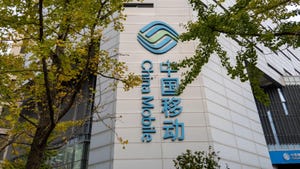Huawei's coy 5G breakthrough
Huawei's new flagship phone is 5G-capable and makes satellite calls – but the company doesn't want to talk about it.

Huawei has created a stir with its run around US sanctions to create a high-end 5G phone out of homegrown chips. But it's been a very low-key stir, beginning with the 'silent launch' of its new flagship Mate 60 series phones, the Mate 60 Pro and the Mate 60 Standard Edition.
The Mate 60 Pro clearly has 5G capabilities, but it's also clear Huawei won't acknowledge it – surely a first in the history of 5G phones. The result is a great deal of speculation and confusion about just what Huawei has done and how.
The Mate 60 Pro, which incidentally is also the first cell phone to offer satellite calling, sports the Kirin 9000s chipset, Huawei's 5G-capable chip. Chinese hardware site Antutu made the initial discovery, confirmed by others including Gizmodo China and GSMarena.
Officially the 9000s doesn't even exist. It is not even listed on the HiSilicon website. It's obvious that Huawei's coyness about this potentially huge breakthrough is so as not to inflame US officials and legislators. But the company's reluctance to confirm even the most basic details means even a lot of experts have questions.
Significant mystery
Tech website Sparrows News aggregated the various hardware benchmark reports and found that the chips vary significantly in how they have been built. It said a "significant mystery remains regarding the processor and how the devices achieve 5G speeds without having 5G capabilities."
One underlying answer may be Huawei's use of chiplets, essentially aggregating smaller chips to get higher performance, which means diverse kinds of chips are being deployed.
Another may be a series of small and unsung technology breakthroughs, such as that claimed by listed electronics firm Sai Microelectronics. It announced in July it had achieved scale in its manufacture of BAW filters, a critical component of high-end chips, through a major deal with a local handset brand.
The disclosure was interpreted as news of a deal with Huawei. But analysts noted that even if not, it was still a significant breakthrough in a segment previously supplied solely by foreign companies.
Besides the 5G capability, the new phones are the first to provide direct to satellite calling (unlike Apple's antenna-based solution, Huawei's has a dedicated chip) and the first with all-Chinese components.
It is set to be wildly popular with Chinese consumers. Huawei fans queued up outside Huawei stores in China Wednesday to get their hands on the device, undeterred by the 7,000 Chinese yuan (US$965) price tag.
Want to know more? Sign up to get our dedicated newsletters direct to your inbox.
But the question for Huawei remains how long can it continue to keep silent? It can't dodge it forever.
Related posts:
— Robert Clark, contributing editor, special to Light Reading
Read more about:
AsiaAbout the Author(s)
You May Also Like












